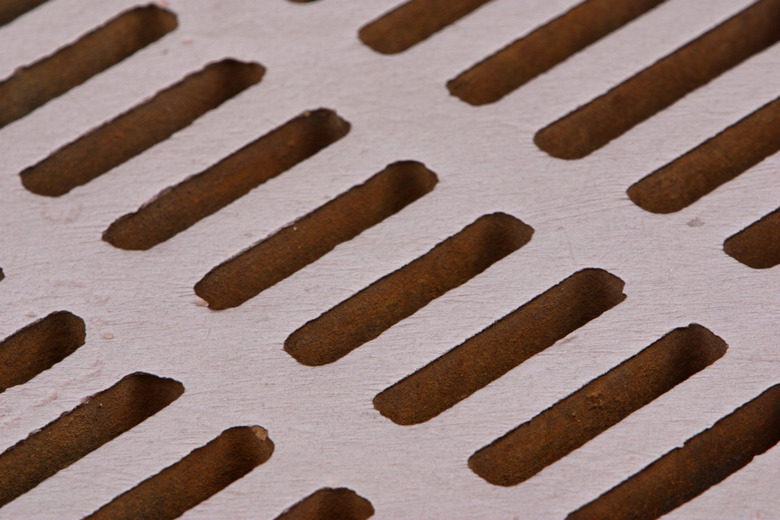How To Install Catch Basins For A Backyard Drainage System
Things Needed
- Stake
- Rope
- Plastic tarp
- Flat shovel
- Trenching hoe
- Gravel
- Filtration fabric
- 4-inch PVC perforated drainpipe
- "T," "Y" or elbow fittings
- Measuring stick
- Catch basin
- Wheelbarrow
A catch basin is an inlet where excess water quickly enters a drainage system. Installed beneath downspouts and where water accumulates in a yard, the catch basin connects to underground drainpipes, which then distribute the water to a ditch or another safe outlet. Installing a catch basin is a fitting project for do-it-yourselfers with basic tools, as long as you have the strength required to dig out a trench for the drainpipes.
Step 1
Identify the spot in the backyard where water accumulates, and insert a stake in the center to mark the location for the catch basin. Plan the course for the rest of the system by laying a long rope on the ground from the stake to your designated outlet. Make the course straight and direct.
Step 2
Lay a plastic tarp along the side of the rope. Use a shovel to cut through the sod and lay it on the trench. With a trenching hoe, dig out an 8-inch-wide by 18-inch-deep trench, dumping the soil on the tarp.
Step 3
Start at the end of the trench near the spot where the catch basin will go, and dig the trench down 1/8 inch deeper per foot of length at a smooth, consistent slope.
Step 4
Lay 6 inches of gravel over the bottom of the trench. Place water filtration fabric over the gravel surface.
Step 5
Set 4-inch-diameter PVC perforated drainpipes in the trench. Connect the joints with "T," "Y" or elbow fittings, depending on the angle needed to connect each length of pipe.
Step 6
Measure the depth of the catch basin with a measuring stick, and dig out a hole equal to the depth of the basin. Insert the basin so the lid of the drain grate will sit at ground level.
Step 7
Connect the hole in the side of the basin to the open end of the drainpipe with a "T" or "Y" fitting so the angle is wide enough for a drain snake to fit through if the system ever gets clogged.
Step 8
Cover the pipes with a 6-inch layer of gravel to block out large debris. Lay filtration fabric over the surface.
Step 9
Fill the remaining expanse with soil and the sod you removed to dig the trench. Transfer the rest of the soil with a wheelbarrow to fill in a low area of the yard.
